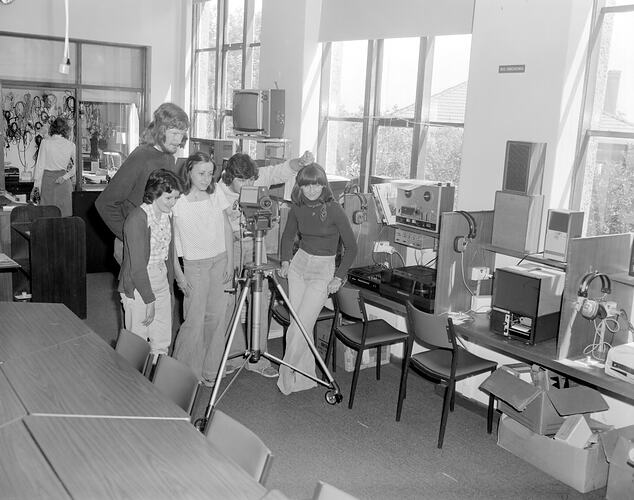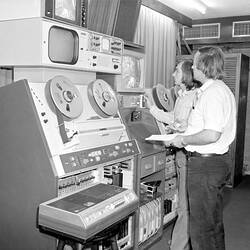This document explains the difference between linear and non-linear editing. It goes on to look at QuickTime and Adobe Premiere, which were early non-linear editing tools for the Macintosh
Linear and non-linear editing
Non-linear editing is a non-destructive editing process. In video editing, the terms 'linear video editing' and 'non-linear video editing' have technical meanings, which can be explained as follows:
Linear video editing describes a process in which scenes are copied from one video tape to another, using two tape VCRs, in the order required. The new tape is thus created in a linear fashion. The disadvantage of this method is that it is not possible to insert or delete scenes from the new tape without re-copying all the subsequent scenes. Linear editing was the method originally used with analogue video tapes.
Non-linear video editing is achieved by loading the video material into a computer from analogue or digital tape. The editing process creates a new 'tape' by storing all the commands entered by the operator. This method allows the operator to cut, copy and paste scenes in any order and make any changes desired. At the completion of the editing process the computer can then build a new file by applying the commands to the original digital image stored on the disk. The original digital image on the disk is unchanged. The new video file can then be outputted to a video tape, attached to an email or posted to the web.
QuickTime and Adobe Premiere
QuickTime and Adobe Premiere were early non-linear editing tools for the Macintosh.
Adobe Premiere v 1.0 is a non-linear video editor for the Macintosh computer. It was first released in December 1991 and made use of functions available within QuickTime (also released in December 1991) to enable professional digital editing of time-based imaging.
QuickTime permitted the editing of short movies; Adobe Premiere was a fully professional video editor. Using Adobe Premiere software allowed easy video editing at a very low cost compared to the professional systems in use in those days - AUD$20,000 versus AUD$100,000. Video editing using Adobe Premiere could be performed non-destructively, and inclusive of special effects, titling and transitions previously the domain of high-end production firms.
The development of the QuickTime video format is an example of Apple bringing advanced computing to the general population.
By the end of 1991, video editing was brought to a slightly broader group than high-end production houses through:
- the availability of the state of the art Quadra 900 (released October 1991)
- the development by Apple of the QuickTime video format (released December 1991)
- the development by Adobe of its professional non-linear video editing application Premiere (released December 1991); and
- the availability of the Videospigot card for plugging in to the Quadra 900 to perform analogue to digital conversion of video on transfer from the camera to the computer.
Further advances followed in 1993, with the incorporation of analogue to digital video converter cards into the Centris and Quadra AV series of Apple computers, though none of these machines had the RAM capacity of the Quadra 900. Subsequently digital video converter cards were incorporated into the full range of Apple computers. Then, in 1999, great strides were made in empowering a wide group of video enthusiasts to engage in digital video production. The iMac DV SE computer was released with a FireWire port, which enabled Apple's iMovie application, which came bundled with the iMac DV SE, to import video footage to the iMac using the FireWire interface on most MiniDV format digital video cameras. From then on, movie editing at home was accessible to the general computing public. By then, transitions which took hours to be processed on the Quadra 900 in 1991 could take place in minutes. From 2001 Apple's iDVD was also bundled with the computer and this software enabled the edited movie to be burnt to a DVD without resorting to a third-party application. Also in 1999, Apple introduced a fully professional video editing application, Final Cut Pro, which was a direct competitor on the Macintosh to Adobe Premiere.
More Information
-
Keywords
-
Authors
Mr Noel S. Jackling, Mr Stephen Withers, Mr Brian R. Livingston
-
Article types



